Toyota Highlander Vs Subaru Ascent: Which Crossover is Right for You?

Toyota and Subaru may be working together more and more these days, but one segment where they remain bitter rivals is the three-row crossover market.
Toyota’s the veteran here. The Highlander has been plying North American highways for two decades now, offering buyers more space than the compact RAV4 while retaining the road-biased ride comfort families enjoy. It was also the first hybrid crossover from the Japanese brand—an option that, as of March 2021, accounts for nearly 30 percent of Highlander sales in the USA.
Get a Quote on a New Subaru Ascent or Toyota HighlanderThe Subaru Ascent is a much newer face in the crowd, debuting for the 2019 model year. Taking over from the unloved Tribeca, the Ascent sits at the top of the Subaru lineup. Subaru has studied its competition, offering up a package that majors on space, comfort, and more cupholders than you could ever need—19, to be exact. Which of these family haulers is right for you? Let’s find out.
Cabin Space
Highlander: The Highlander rides on a long 112.2-inch wheelbase (2,850 mm), with seating for up to eight folks. Front-row riders naturally get the most space, with 42.0 inches (1,067 mm) of legroom and 41.2 inches (1,046 mm) for noggins. (Opting for the moonroof shaves around an inch and a half.) Moving to the second row costs little in terms of headroom, and legroom is down a single inch (25 mm).
Way-back accommodations are less good. Headroom is a perfectly acceptable 36.1 inches (917 mm), but legroom is just 27.7 inches (704 mm). Three people will fit back there, but they best not be old enough for their own license.
SEE ALSO: Mazda CX-9 vs Toyota Highlander ComparisonOf note: the top Platinum trim comes with an enormous panoramic moonroof. What it gains in natural light, it sacrifices in first- and second-row head space: it subtracts 1.2 (30 mm) and 2.3 inches (58 mm), respectively.
Ascent: The Subaru is longer overall than the Toyota, and boasts the longer wheelbase at 113.8 inches (2,891 mm). It’s the same width, and a couple inches taller.
Given those basic ingredients, it’s of little surprise the Subaru has the measure of its competition in the space race. Headroom stands at 41.3, 40.0, and 36.3 inches (1,049/1,016/922 mm) from front to back; Ascents with the moonroof chop a little over an inch from the first two rows.
Legroom is a trickier story. The Ascent shades the Highlander up front—if only just—with 42.2 inches (1,072 mm). The middle row legroom is 38.6 inches (980 mm), though that’s still plenty for anybody not named Lebron James. Meanwhile the three-wide rear seats offer up 31.7 inches (805 mm) of legroom, which could be the difference between content and contempt for adult riders.
Bottom Line: We weren’t always the greatest math students, but even we see the Ascent’s numbers are superior here. A smaller-but-still-vast second-row legroom measure doesn’t overshadow the rest of the package.
Cargo Space and Towing
Highlander: With every row upright, the Highlander offers 16.0 cubic feet (453 litres) of storage space. Drop the third row flat for a three-fold increase to 48.4 cubes (1,371 L). Run your Highlander in two-seat form and watch it swallow up to 84.3 cubic feet (2,387 L) of stuff.
Hybrid Highlanders are rated to tow up to 3,500 lb. Stick to the gas-only models and that number rises to an even 5,000 lb.
SEE ALSO: 2020 Kia Telluride vs 2019 Subaru Ascent: Three-Row ThrowdownAscent: The Ascent takes the lead early here thanks to a healthier 19.9 cubic feet (563 L) of space behind the third row. For reasons known only to Subaru’s engineers, it falls just behind the Highlander when the wayback is folded, measuring 47.5 cubes (1,345 L). The Scooby pulls ahead again with both rows down though, scoring 86.5 cubic feet (2,449 L).
All Ascent trims are rated at 5,000 lb of max towing capacity, except the base model, which is stuck with just 2,000 lb.
Bottom Line: These two machines are pretty closely matched in terms of stuff-hauling ability. If you’ve got any large items you’ll regularly be transporting, we recommend a few practice packs.
Tech and Features
Highlander: The Highlander lineup kicks off with the L trim. Standard features include cloth seating for eight, an 8.0-inch touchscreen with the three As (Apple CarPlay, Android Auto, and Alexa), LED head- and taillights, three-zone auto climate control, 18-inch alloy wheels, and an eight-way power-adjustable driver’s seat. A powered liftgate joins the lineup on the next-up LE.
The mid-level XLE introduces a lot of standard equipment, included a moonroof, wireless charger, and SofTex-trimmed seating for seven (eight remains an option). Power adjustments go up to 10-way on the driver’s side, and four-way for the front passenger, with both getting heating too. A heated steering wheel is included on Limited and Platinum trims.
SEE ALSO: Toyota Highlander vs Toyota RAV4 Comparison: Which Crossover Is Right For You?Built-in navigation is available on the XLE trim upwards, with an uprated, 11-speaker JBL audio system showing up on the sportier XSE’s options list. (The XSE trim is V6-exclusive.) Both are standard on the Limited, which also offers an optional 12.3-inch touchscreen; it’s standard on the top Platinum trim.
Springing for the Platinum is the only way to access a few key features. Full-leather seating, a panoramic sunroof, digital rearview mirror, heated second row, head-up display, and 360-degree camera are all exclusive to Platinum.
Ascent: At the bottom of the Ascent lineup is the … Ascent. No trim name here. This eight-seater features a 6.5-inch touchscreen (with Android Auto and Apple CarPlay functionality), tri-zone climate control, and 18-inch alloys. LED headlights turn with the steering, too. You won’t find any power adjustments for the driver’s seat, though.
For the latter, you’ll need to upgrade to the Ascent Premium. You’ll get heated front thrones too, as part of the All-Weather Package. Stain-resistant cloth seating is a huge benefit for families as well, and a larger 8.0-inch touchscreen with 4G WiFi hotspot is most welcome. Second-row captain’s chairs, a panoramic moonroof, powered tailgate, and built-in navigation are optional.
SEE ALSO: Subaru Crosstrek vs Subaru Outback: Which Crossover is Right For You?Graduating to the Limited trim in Subaru-land brings in 20-inch alloys, heated second-row seats (and steering wheel), and leather seating. Meanwhile the Touring includes all that, all the optional goodies elsewhere in the lineup, plus ventilated front seats, and 14-speaker Harman Kardon sound system.
Bottom Line: While there are far less trim options for the Ascent, the simplicity of the lineup makes it easy to pinpoint what you need. The heartland Premium and Limited trims both feature solid feature mixes. If you’re shopping top-shelf trims, however, the Highlander Platinum is practically Lexus levels of swanky.
Powertrains
Highlander: Toyota continues to offer a traditional gas V6 in the Highlander. The sturdy six-pot spits out 295 hp and 263 lb-ft of torque through a smooth-shifting eight-speed automatic.
Buyers wanting to be a little friendlier to the environment can opt for the Highlander Hybrid. In comes a 2.5-liter four-cylinder and no less than three small electric motors (in AWD form). Combined output is 243 hp. Toyota only quotes the four-pot’s torque figure (175 lb-ft), but the hybrid benefits from a surge of low-speed torque thanks to those motors.
Whether they choose hybrid or gas, Highlander buyers have the option of front- or all-wheel drive.
Ascent: If you’re buying an Ascent, no matter the trim, you’re getting the same drivetrain. A turbocharged 2.4-liter flat-four engine pumps out 260 hp—right between the Toyota figures—plus chunky 277 lb-ft from as low as 2,000 rpm. A continuously variable transmission (CVT) handles not-shifting duties, and Subaru’s symmetrical all-wheel drive is standard.
Bottom Line: Highlander buyers simply have more choices, including forgoing AWD in drier, sunnier climes.
Fuel Economy
Highlander: A gas-powered front-drive Highlander will score up to 29 mpg on the highway according to the EPA. Its city rating is 21 mpg, which results in an average of 24 mpg. Checking the AWD box drops the numbers to 20 mpg city, 27 mpg highway, and 23 mpg combined.
Hybrid models are, unsurprisingly, vastly more efficient, especially in the city. A front-drive Highlander Hybrid will score 36 mpg city and 35 mpg highway, for a combined 36 mpg. AWD shaves off a small amount on lower trims, scoring 35 mpg across the board. The higher-spec Limited and Platinum AWD hybrid models drop the highway figure to 34 mpg.
Ascent: The Ascent’s figures are much less varied. Pick a lower trim and you’re looking at 23 mpg combined, split between 21 city and 27 mpg highway. Opt for a Limited or Touring and every measure drops by 1 mpg.
Bottom Line: The Ascent is very slightly more efficient against the equivalent AWD, gas-only Highlander. But factor in all the other Toyota options, especially the hybrid offerings, and the Highlander is the better choice.
Safety
Highlander: As part of a model-wide upgrade for 2021, every Highlander features Toyota Safety Sense 2.5+. This includes automatic high-beams, lane-keep assists, adaptive cruise control, and automated emergency braking with both pedestrian and cyclist detection. TSS 2.5+ also includes left-turn intersection support and traffic sign recognition. All Highlanders include blind spot monitoring with rear cross-traffic alert as well. Higher trims include a surround-view camera.
The Highlander scores a Top Safety Pick+ rating from the Insurance Institute for Highway Safety (IIHS), and a 5-star NHTSA crash test rating.
Ascent: Subaru has its own safety suite as standard in the Ascent, dubbed EyeSight. It includes the expected assists, including full-range cruise control, auto high beams, automated emergency braking, and lane centering. Blind-spot detection with lane-change assist and rear cross-traffic alert is included on the Premium trim onwards, with reverse automated braking optional there (standard on Limited and Touring).
Like the Toyota, the Subaru earns top marks from both the IIHS and NHTSA, nabbing Top Safety Pick+ and a 5-star rating, respectively.
Bottom Line: Neither of these family movers skimp on the safety features, which we very much appreciate. The Highlander does include more assists on all trim levels, however.
SEE ALSO: Hyundai Palisade vs Kia Telluride ComparisonStyling
Highlander: The fourth-generation Highlander has a more assertive look than its predecessor. It isn’t what we’d call daring, but it does have a few unique details. The thin taillights look good, and the Supra-inspired crease along the rear doors adds some necessary visual interest.
The XSE trim, meanwhile, goes with a very shouty front-end treatment, featuring an enormous lower bumper opening and smiley main grille.
Ascent: Stylistically, the Ascent breaks little new ground in Subaru-land. Someone dropped the Outback into the photocopier, set sizing to 120-percent, and called it a day. The upright shape conveys practical space, and the conservative looks feel like it’s still apologizing for the Tribeca 15 years later.
Bottom Line: Neither one of these big crossovers is going to draw the disapproving looks on the morning school run.
Pricing
Highlander: Toyota asks $36,085 for a front-drive Highlander L, destination included. The going rate for the LE is $38,285, with the mid-spec, well-equipped XLE ringing in at $41,085. Adding AWD to any of these trims tacks another $1,600 on the bottom line.
Sitting in the middle of the lineup is the V6-only XSE trim. This sporty-looking model checks in at $42,680. Sending power to the rear axle costs $1,950 here, as well as on the rest of the upper trims. This includes the Limited ($45,040) a Platinum ($48,240).
The hybrid drivetrain is available on every trim except the base L. It costs $1,400 more, regardless of number of driven wheels. A fully-loaded Highlander Hybrid Platinum AWD will run $51,590.
Ascent: The Ascent is one of the least-expensive three-row crossovers available in the US, starting off at $33,345 in base trim (destination included). That’s over $4,000 less than the equivalent AWD Highlander L.
Moving up to the Ascent Premium will drain another $2,500 from your bank account, before a handful of available option packages.
The sweet spot of the lineup is the Ascent Limited, which begins at $40,645 before options. It’s a sizeable jump up from there to the $46,495 Touring, where your only choice is which colors you want for the exterior and leather interior.
Bottom Line: The Ascent packs incredible value across its price range. Its base trim is slightly less well-equipped than the base Highlander—hey, we’ve grown accustomed to power-adjustable drivers—but the middle of the lineup really highlights the bang-for-buck. Even in their respective peak trims, the Ascent is nearly $5,000 cheaper than the Highlander. To Toyota’s credit though, the Highlander Platinum is the more lux-feeling rig.
In Conclusion
You’re not going to go wrong with either of these smooth mid-sizers. The Subaru offers a better blend of space and family-focused practicality. If you’re regularly filling every seat in the house, the Ascent will draw less complaints. It’s also the better value deal, too.
The Toyota counters with a Baskin-Robbins level of flavors to find just the right one to mesh with your family unit. The sizeable fuel savings of the Highlander Hybrid are impossible to ignore, too. The top-level trims feel more special than their equivalent Subaru alternatives as well. On paper, the Highlander offers more right answers for more people.
Become an AutoGuide insider. Get the latest from the automotive world first by subscribing to our newsletter here.

Kyle began his automotive obsession before he even started school, courtesy of a remote control Porsche and various LEGO sets. He later studied advertising and graphic design at Humber College, which led him to writing about cars (both real and digital). He is now a proud member of the Automobile Journalists Association of Canada (AJAC), where he was the Journalist of the Year runner-up for 2021.
More by Kyle Patrick



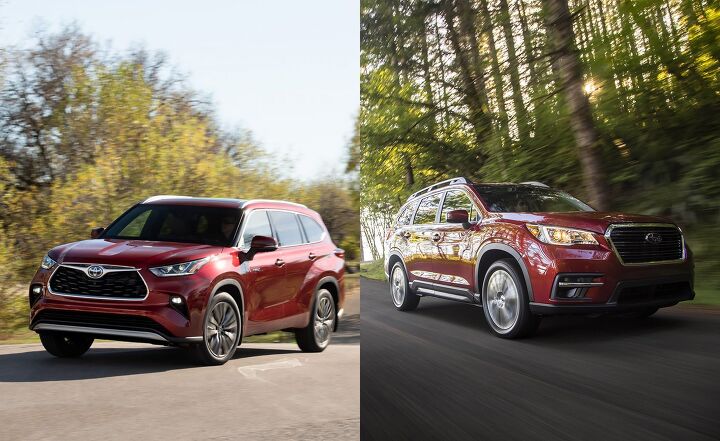






























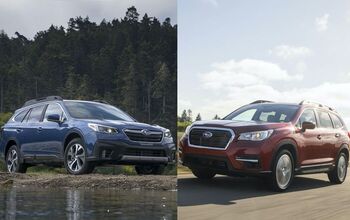

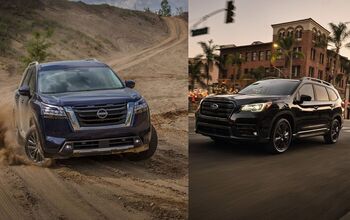



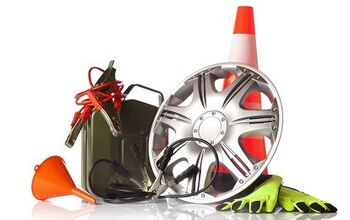
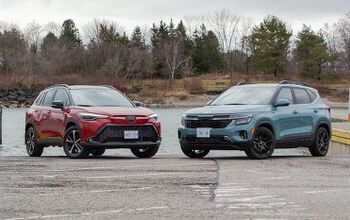



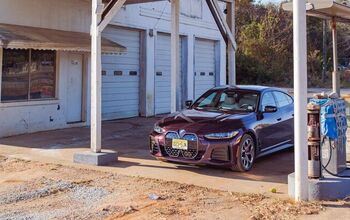
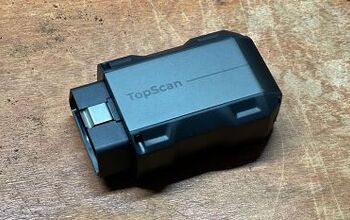


Comments
Join the conversation